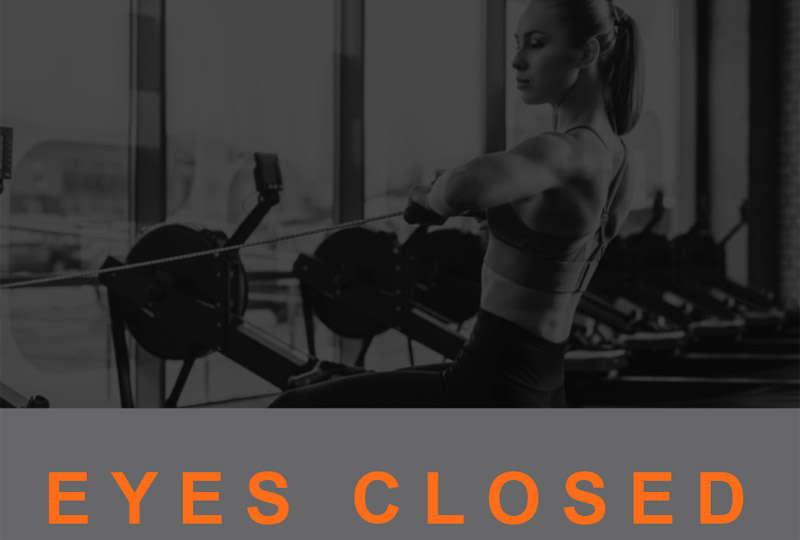I never thought much about closing my eyes while working out. The only times I had done it was in a few yoga classes when the instructor tested our balance in tree pose suggesting we try it with our eyes closed. Recently I have discovered other opportunities to exercise with closed eyes.
Here is what happened when I did.
Closed Eyes Surprise
During the pandemic when gyms could not open their doors, my gym offered some outdoor classes and equipment set up in the parking lot. I took advantage of the ability to be on-site and to exercise around others. It was during the summer in the South with a blazing sun, so I always wore sunglasses.
Once the gym opened, I combined my routines utilizing both inside and outside space. One day I did strength training inside and went outside to do a little cardio on the rower. Once I wiped down the equipment, got the settings where I wanted them, and strapped my feet in, I started rowing. I was facing directly in the sun and could hardly see. I didn’t have my sunglasses and I didn’t want to bust my mojo so far into my workout. So I closed my eyes. I rowed with my eyes closed.
What a unique experience!
Mind and Body Connection
By closing my eyes, my attention was able to turn inward and I focused on movement and breathing. I incorporated this in a couple of sessions on balance training. Walking in a straight line forward, backward, and to the side while balancing a yoga block on your head is a relatively simple task for most people. Take it to a new level by closing your eyes and having your client do the same while doing the same exercise.
Try the closing your eyes technique with exercises balancing on one leg, while planking, doing a wall-sit, standing on a half-dome ball or sitting on a stability ball. Some experts recommend it with weightlifting exercises like squats and deadlifts.
See (no pun intended) what a difference closing your eyes makes in many areas including:
• focus
• form
• technique
• balance
• posture
• grip strength
• coordination
• performance
This morning, I tested my theory on the water. I headed out for a leisurely kayak on a quiet lake with almost no activity other than one small fishing boat gliding through coves. Once I was beyond piers and buoys (and no boats on the water near me), I practiced gliding the oars through the water with my eyes closed. Being hyper-focused, I found that I maintained a straight line the entire time forward and backward. Aside from the physical benefits of kayaking with my eyes closed, it felt to me a form of moving meditation, hearing only nature sounds and the water lapping against the kayak and being attuned to the rhythm of my own movements.
I took it to another level with the paddleboard. Once I was steady standing on the board, I moved away from everything except the water beneath me. I closed my eyes as I slowly paddled through the open water, then I practiced standing still on it with my eyes closed. Much like kayaking, I was super focused on what I was doing. I tuned into the slightest wobble, listened to the sound of the waves lapping against the paddle, and felt the warmth of the sun on my face.
While there are many exercises that would not be safe to do with eyes closed, there are many that are. It is a subtle way to add focus, challenge and variety while training.
Reference:
https://www.advancedhumanperformance.com/blog/eyes-closed-training-for-strength-performance-function#:~:text=The%20reason%20for%20this%20is,movement%20and%20control%20the%20load.&text=Instead%20of%20watching%20your%20way,your%20way%20through%20the%20movement.
https://rangeofmotion.net.au/exercising-with-your-eyes-closed/
Kim Becknell Williams is a freelance writer with more than ten years of personal training experience. Certified through NFPT, she is a Functional Training Specialist and holds a Master Trainer level certificate for resistance, endurance and sports nutrition. Kim has written two books including Gym Etiquette 101. She enjoys writing a variety of lifestyle articles and fitness blogs.


